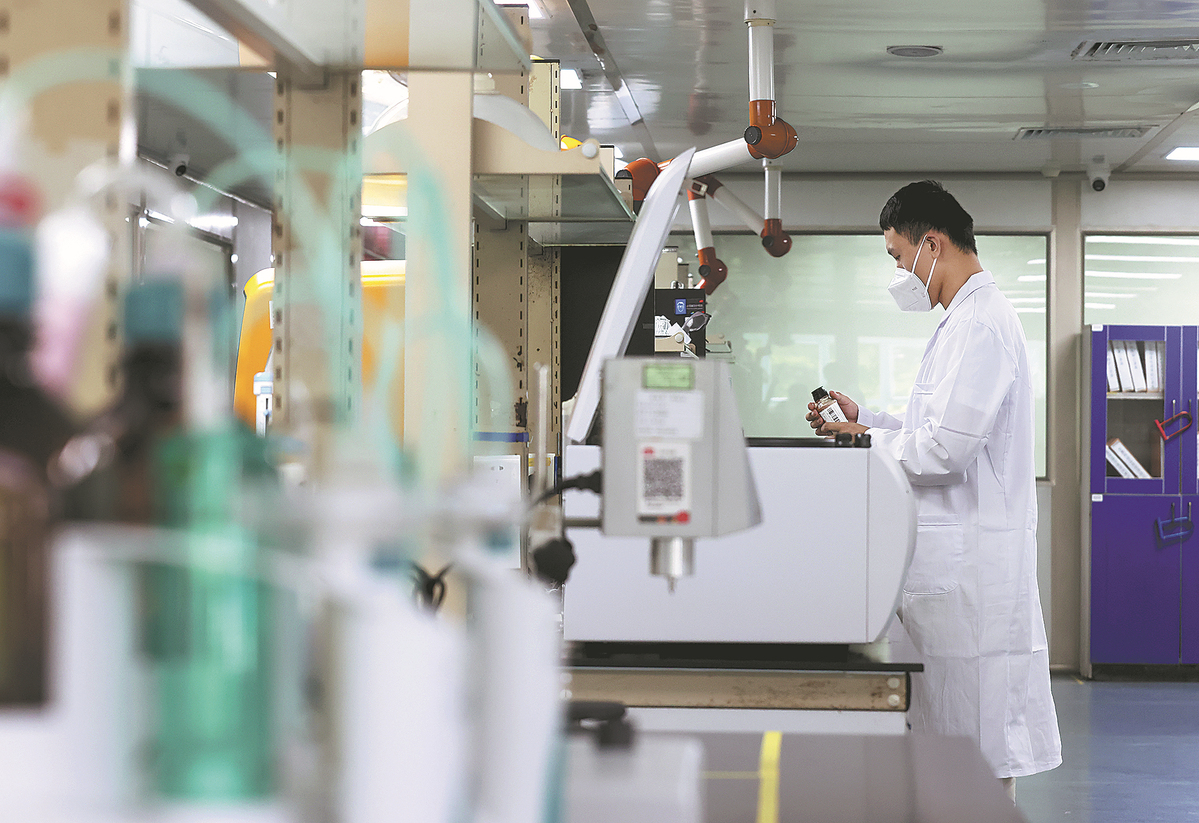Innovation key to high-quality development in Guangdong






New success
Chenghai's thriving toy industry and Shunde's industrial design center chose high-quality development paths, with skilled artisans bringing dreams to life with their intricate designs. However, a different kind of ingenuity can be seen just a short distance away in the vibrant city of Guangzhou.
In April, one of the world's largest container ships, the MSC Irina, whose hull is nearly 400 meters long, started its maiden voyage from Nansha Port in Guangzhou. The vessel's presence in the deep-water port marked yet another success for high-quality development in Guangdong.
Nansha Container Port, which opened in 2004 and lies 70 kilometers south of Guangzhou, is the fastest growing port in the Pearl River Delta serving China's main manufacturing area.
A great deal of work was required to enable the port to accommodate huge vessels such as the MSC Irina.
Although the port is located close to manufacturers in the northwest of the Pearl River Delta, to berth in Nansha, ships must travel along a narrow 35-km channel. It took hundreds of thousands of workers several years to dredge the channel riverbed to a depth of more than 17 meters at a cost of over $1 billion.
Shi Dan, a professor at the Chinese Academy of Social Sciences' Institute of Industrial Economics, said there are many aspects to the requirements for high-quality development.
"From a macroeconomic level, this type of development refers to stable economic growth, balanced regional and urban-rural development, and innovation-driven and green development that benefits everyone with increased and fairer distribution of the fruits of economic growth.
"From an industrial perspective, high-quality development refers to optimizing industrial layout and structure, constantly achieving transformation and upgrading, and significantly improving the efficiency of industries.
"In terms of business management, high-quality development includes first-class competitiveness, reliable and sustained innovation, influential brand-building and advanced quality management with concepts and methods."
Song Xiaoming, deputy general manager of Guangzhou Port Group, which owns and operates Nansha Port, said that to meet these requirements, intelligent management and advanced information processing methods were adopted for the newly built automated terminal, known as Nansha Port's fourth-phase project.
"No workers can be seen at this fully automated port, where colossal bridge cranes precisely locate and lift containers from huge freighters, moving this cargo to automated vehicles."
The terminal is the first of its kind built in the Guangdong-Hong Kong-Macao Greater Bay Area to incorporate Beidou navigation, 5G communications, artificial intelligence and autonomous vehicles. Song said it is hoped that the terminal will form a specialized and large-scale cluster in Nansha to promote comprehensive collaboration among Guangdong, Hong Kong and Macao.
Nansha Port has developed 150 shipping routes with more than 100 countries and regions worldwide as a result of the efforts it has made, which were driven by high-quality development.
In the first three months of this year, the port's total import and export value reached 292.5 billion yuan, a year-on-year rise of 16.27 percent, customs figures show.
Chen Xi, deputy director of Nansha Customs, said that together with the Nansha Port authorities, a variety of policy measures were adopted to cut red tape, further helping customers and logistics companies.
"The highlights of the measures included convenient clearance and tax reduction and exemption," Chen said, adding that in April, the average clearance times for imports and exports in the Nansha Customs District were 28.49 hours and 0.89 hours, respectively.
"These are reductions of 65.8 percent and 92.1 percent, respectively, compared with 2017," Chen added.














